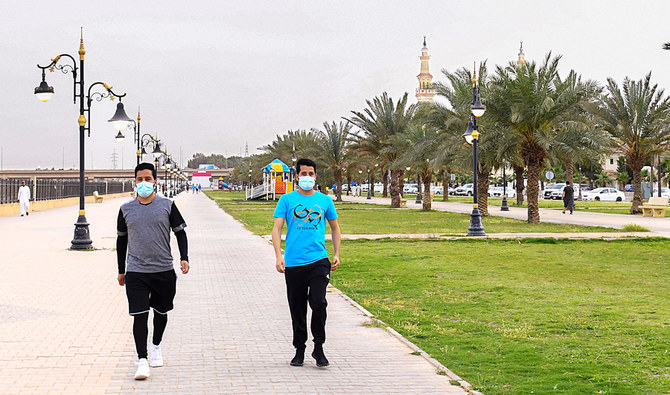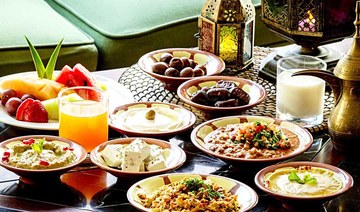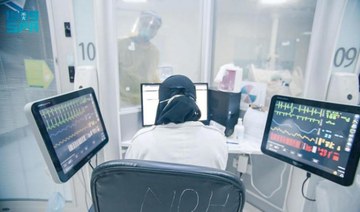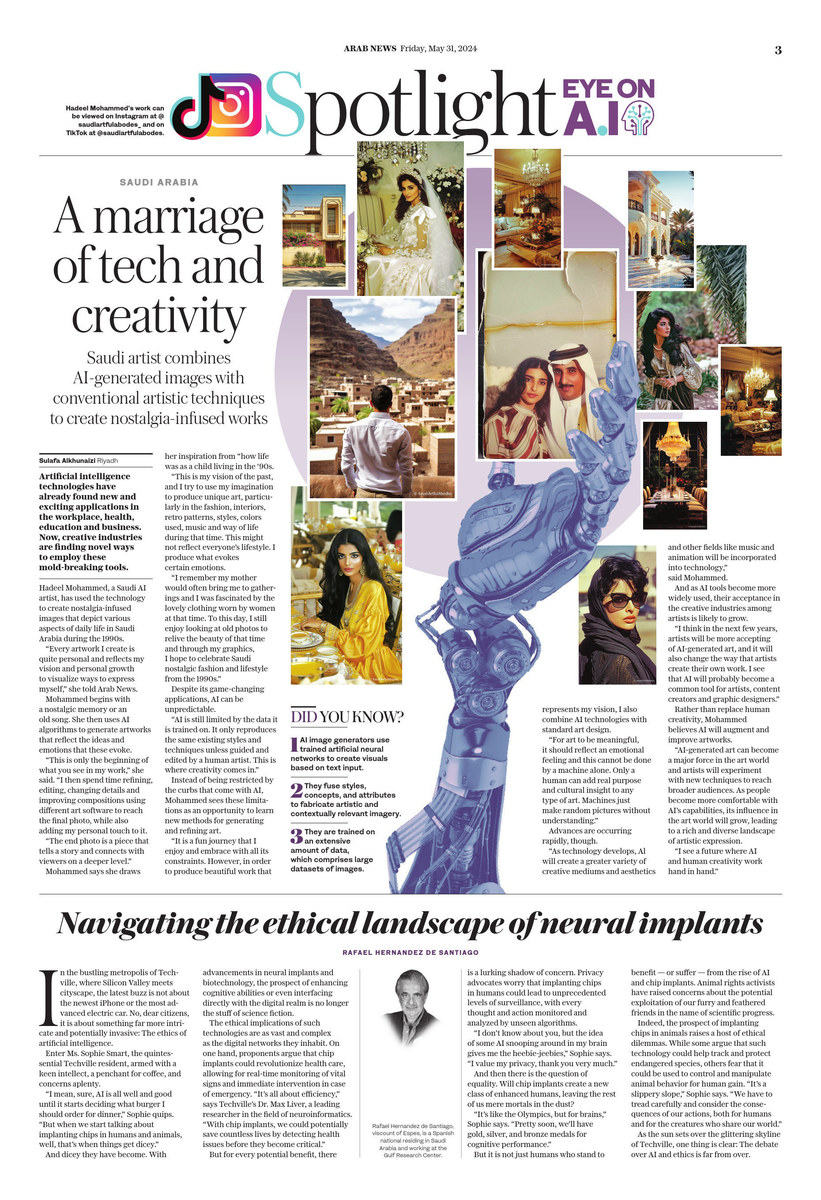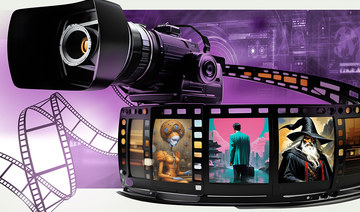JEDDAH: While consuming excessive food during the month of Ramadan goes against the purpose of the holy month, for many Saudis and people of the region, it is a time to indulge in special foods, which often leads to overeating.
For years, Saudis have been facing problems with obesity, with unhealthy diets leading to a variety of poor health conditions. While numerous campaigns have been launched to combat this issue, including by the Saudi Sports for All Federation (SFA), their advice seems to fall on deaf ears during Ramadan.
Arab News spoke to experts — nutritionists and fitness trainers — who discussed their tips to help curb hunger and maintain a healthy weight.
Saudi fitness trainer Nouf Hamadallah, 37, explained that there is no best time to exercise during Ramadan; rather, the time and intensity of the workout can vary from person to person.
“Exercising during Ramadan depends on the flexibility of one’s schedule. There’s no specific time to work out. Most people who believe this are misinformed by what they read,” she told Arab News.
FASTFACTS
• A nationwide cross-sectional survey conducted over phone interviews across 13 regions of the Kingdom in June 2020 showed that the national weighted prevalence of obesity was 24.7 percent.
• It highlighted that obesity was significantly associated with Type 2 diabetes, high cholesterol and hypertension, among other diseases.
“One common bit of advice in popular articles says that if people work out before iftar, they will burn calories and lose weight. But this depends on their goals and calorie
intake. Some people cannot work out while fasting because they feel sick and nauseous, and their blood sugar drops. Then they become discouraged from exercising, not knowing that all they have to do is change the timing and nature of their workout. There is no one-size-fits-all approach.”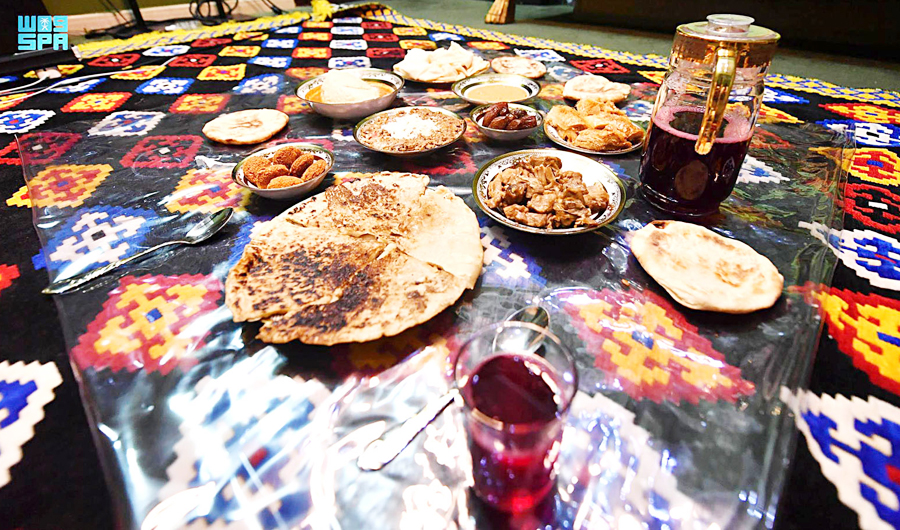
She added that it is easy to lose muscle mass if people do not choose the right foods for iftar and sahoor, also stressing that it is essential to hydrate during breakfast. Should one choose to work out right before iftar, a protein shake and a nutrient-dense meal with few carbs are advised in breaking fast.
If anyone wants to adopt healthy habits or break bad ones, Ramadan is an excellent chance to do so.
Arwa Bajkhaif, Dietician
“What you eat for sahoor will determine your energy levels for the next day, too. It should be a meal with a good amount of protein and vegetables,” said Hamadallah. “When your body is depleted of energy, the first thing you look for is sugar, and that’s what we want to avoid.”
Digestive problems such as acid reflux also occur due to poor eating habits in Ramadan, she added, and people with such digestive issues need to take note of the specific foods that irritate their stomachs.
She recommended that they avoid these foods if they are planning to exercise and instead have a few dates, soup and maybe a cup of coffee before beginning their workout, saving a full meal for afterward.
Iftar and sahoor also need to be divided into portions to avoid digestive problems, she added.
Saudi clinical and sports dietitian Arwa Bajkhaif, 29, said Ramadan is a “golden opportunity” to fast and practice self-control. If anyone wants to adopt healthy habits or break bad ones, Ramadan is an excellent chance to do so.
What you eat for sahoor will determine your energy levels for the next day.
Nouf Hamadallah, Fitness trainer
“People should know their dietary requirements and follow a suitable diet for their particular health situation during the holy month of Ramadan,” Bajkaif told Arab News
“For individuals with chronic diseases such as diabetes, I recommend seeing an endocrinologist for insulin and medication adjustments and a clinical dietitian for follow-ups to adjust the amount and type of carbohydrates accordingly.”
As for changing one’s eating habits, she suggested that people should not adopt more than three easy and healthy habits. “Being realistic and specific is key to achieving health goals.”
Saudi dietitian Alaa Gotah advised people to drink plenty of water between iftar and sahoor, avoid sugary drinks especially during iftar to maintain insulin levels, and eat plenty of hydrating food such as salads while limiting the intake of carbohydrates and sweets.
She stressed that fasting cleanses the body of toxins and forces cells into processes that are not usually stimulated when a steady stream of fuel from food is always present.
“Sahoor should include a healthy amount of fiber, which stays for a long time in the intestines. To reduce the feeling of thirst and hunger, it’s recommended to eat fruits that contain dietary fiber and magnesium, such as bananas, dates and watermelon,” Gotah told Arab News.
A nationwide cross-sectional survey conducted over phone interviews across 13 regions in June 2020 titled “Obesity in Saudi Arabia in 2020: Prevalence, Distribution, and its Current Association with Various Health Conditions” showed that the national weighted prevalence of obesity was 24.7 percent.
The study highlighted that obesity was significantly associated with type 2 diabetes, high cholesterol and hypertension, among other diseases.
The Saudi Sports for All Federation launched a campaign to help people stay active during the holy month, presenting the Ramadan edition of “Step Together,” where people are encouraged to walk or run 20 kilometers for 20 days during Ramadan.



